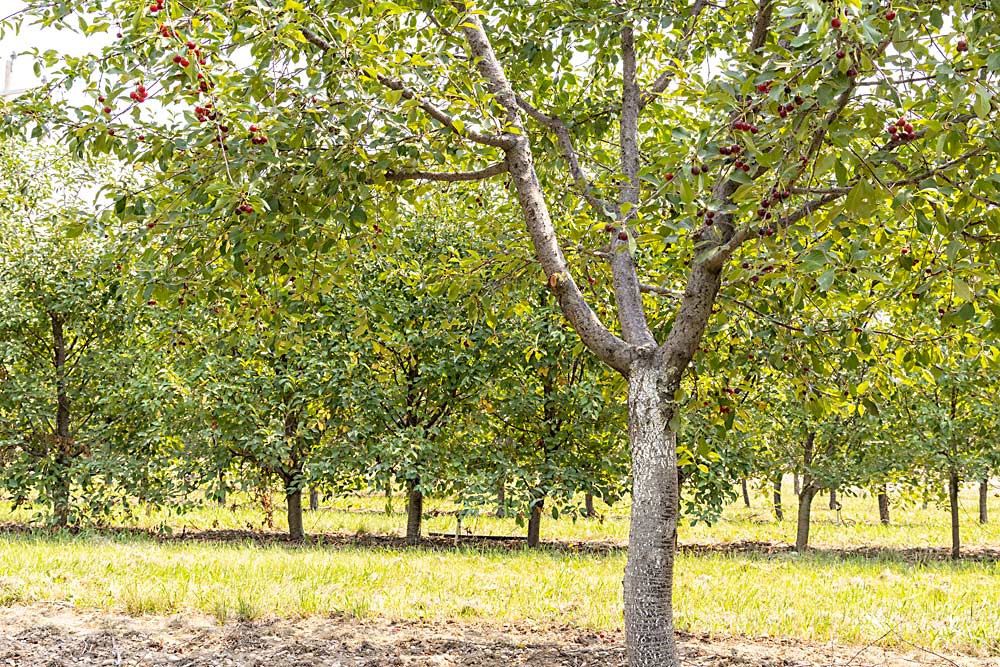
Generations ago, Utah fruit growers turned to tart cherries because the trees thrived in the region’s salty soils and the mechanized harvest made the crop manageable for family farms without much access to seasonal labor.
Today, growers still plant the way their grandfathers did, but they face escalating input costs, pressure from development and competition from imports. That’s why Utah State University professor and Extension fruit specialist Brent Black has devoted much of his research program to finding more efficient management strategies for the nation’s second-largest tart cherry region.
Much of that work centered on the vision of a high-density system: dwarfing, precocious plantings that could be harvested over the row, like a giant blueberry bush, starting in the third leaf, to boost an orchard’s productive lifetime. Traditional trees can’t withstand shaking until the seventh or eighth leaf, Black said, and then trunk injuries from shaking can cut into an orchard’s longevity, too.
But as such high-density plantings mature, yields continue to lag conventional systems. So Black is turning to technology to find new approaches to increase orchard efficiency.
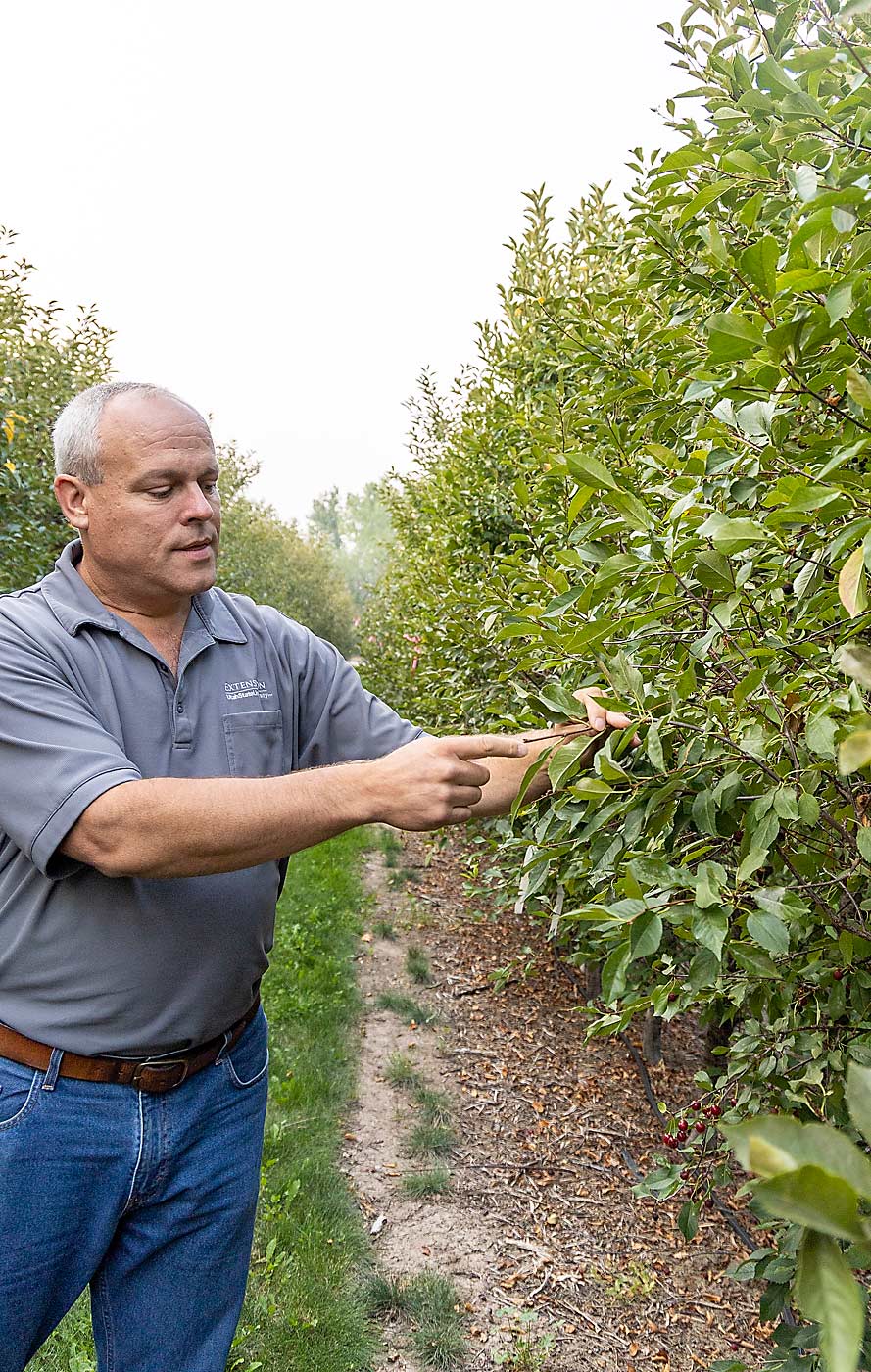
“That’s really been the evolution of my program to find ways to keep the industry profitable and sustainable,” he said.
By linking together soil maps, estimated yield maps and canopy imagery, Black and colleagues at Utah State and Michigan State University hope to show growers how to optimize irrigation, nutrition and canopy management for the orchards already in the ground. The research planned over the next four years is supported by a $2 million grant from the U.S. Department of Agriculture’s Specialty Crop Research Initiative.
High-density hopes on hold
Black began planting high-density trial blocks over a decade ago, swapping Mahaleb rootstocks for dwarfing Gisela 3, 5 and 6, and pushing plant density from 18- or 20-foot rows and 14- or 16-foot tree spacings down to as narrow as 13 by 4.
Test plantings over the years have included different spacings and different rootstocks, such as the Corette series released by MSU in 2017, as well as trials to see if hedging can reduce the dormant pruning costs necessary to keep high-density trees in their space.
The trials continue, but as the orchards mature, it has become clear that the smaller trees just can’t compete in terms of production. Various high-density trials are producing 16,000 to 22,000 pounds per acre, depending on the treatments, Black said.
“Our growers want 30,000 pounds per acre from a tart cherry block in its prime,” Black said. “So, 22,000 is not going to convince them to change what they are doing.”
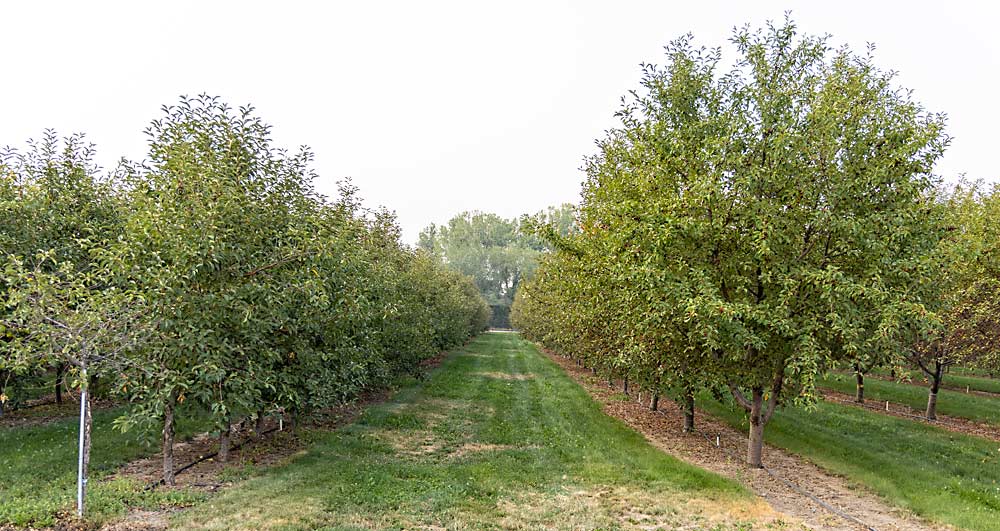
Count Thad Rowley, who farms about 500 acres of tarts in Santaquin, among the unconvinced. He hosts one high-density block planted with Black in 2014 and said they’ve struggled with powdery mildew in the dense trees.
“On the small acre or two of high-density we’ve grown with Brent, I have not seen yields comparable to our trees we are out here shaking,” he said. Even if yields improve, a wholesale system change, including all of the equipment set up for 18-by-14 plantings, poses an expensive proposition. “To switch over to high density, it just isn’t economically viable for us right now.”
And he’s not against high density in general, he added, as his recent plantings of Honeycrisp and EverCrisp apples are planted at 11 feet by 3 feet.
His dad, Phil Rowley, a longtime industry leader who pioneered the dried cherry production the region is now known for, expressed more optimism that eventually, with the right rootstocks, the earlier production and gentler approach will win out.
“I think it’s got some real merit, but it hasn’t yet borne out to be the great hope we had,” Phil Rowley said.
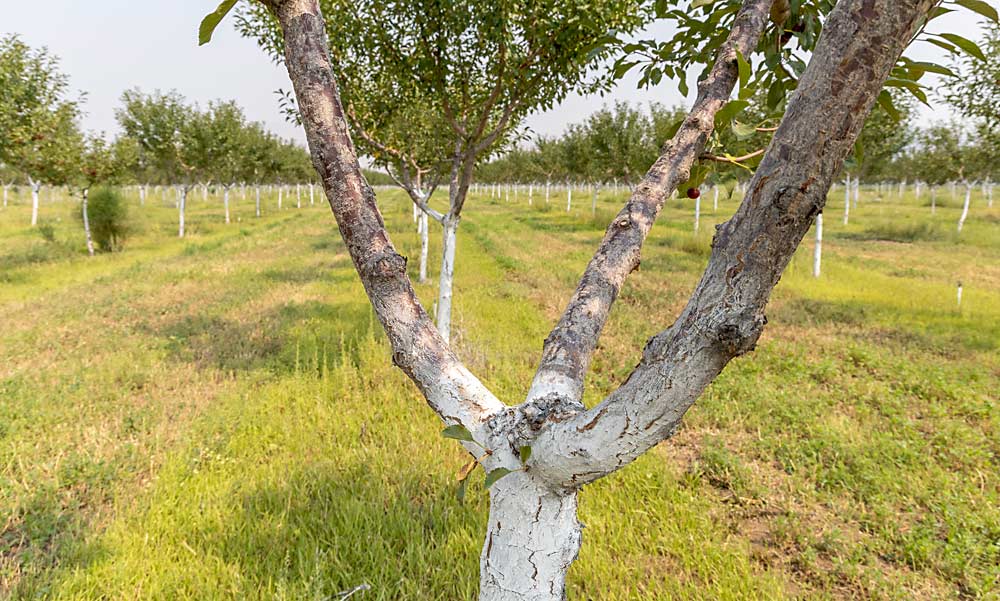
Black said that he’s yet to see the MSU rootstocks improve the high-density performance over the Gisela roots, but he only planted them in 2017. As for the labor-reducing hedging? It also reduced yields in the first season, “because we lost fruiting wood to set the tree shape,” he said. “Then when we hoped to see that fruiting wood recover, we had a frost” in 2020.
So, he’s still collecting data. Growers typically dormant-prune trees hard every three years, but Black’s trials include a mix of severity, timing and methods, to find what approach will be most efficient.
Technology meets traditional
Growers may still get the highest yields from traditional plantings, but Black believes emerging technologies could help them manage those orchards more efficiently.
But for a low-input, processing crop, he’s taking a very different approach to precision orchard management than the “optimize every branch” approach being developed for apple orchards, Black said.
“We’re going in the other direction. We’re a processing crop so we can’t justify coming up with robots that count every bud or flower cluster,” he said. “We’re taking a page from commodity crops. With yield monitors and soils maps … they have lots of information to improve the precision of their inputs for low-input crops.”
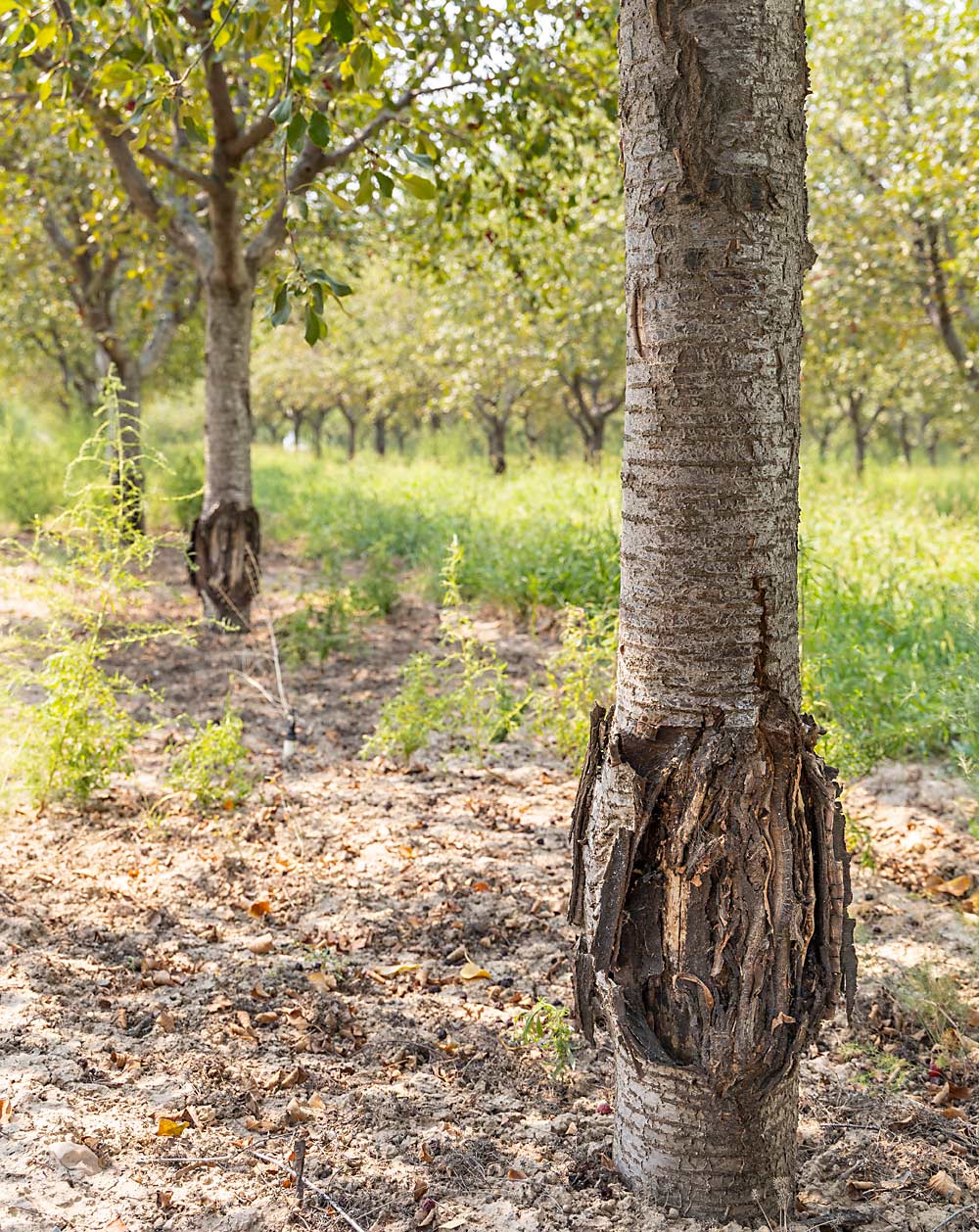
For example, Utah fruit growers have to contend with highly variable soils, and typical irrigation practices can leave some clay soils saturated while sandy spots within the same block suffer water stress. Plus, irrigation water, pumped from wells or from a reservoir on the opposite side of the Wasatch Mountains, is expensive. Making a soil map with electromagnetic induction could help to identify those different zones of water needs and design better irrigation systems, Black said.
When it comes to canopy management, the plan is to combine drone imagery collected by the AggieAir unmanned aerial vehicle research program, led by engineering professor Alfonso Torres-Rua, with canopy interception data collected using a light bar mounted on an ATV.
Black said he was inspired by research from University of California, Davis, looking at the relationship between canopy size and yields in nut orchards. To get yield maps, the researcher, Bruce Lampinen, put load cells on the machine that sweeps up the fallen nuts. That work showed that growers were pruning too much and could optimize performance by doing less.
But for tart cherries, which are harvested into tanks of cold water, which the fruit then displaces, there’s no way to weigh the fruit as it comes off the trees. Instead, Black rigged up a system that logs a GPS point every time a tank of fruit is unloaded and maps those points. It’s crude, but parts of the orchard where tanks are changed out more frequently have higher yield per tree.
“If we have good maps of yield and canopy density, a grower can take his crew out and say, this is the right density, let’s make the rest look like this,” Black said. “Of course, your grandpa has a pretty good feel for (the right canopy), but how do we translate that to somebody who doesn’t have that much experience? One of the ways to do that is with data.”
Thad Rowley said he’s excited about the new grant and is serving on its stakeholder advisory group.
“Any time you can get more information about your orchards and yields is good,” he said. “All inputs are going up, and we either have to be a lot more efficient in the orchard or we aren’t going to be here.”
—by Kate Prengaman
A tradition of reinvention
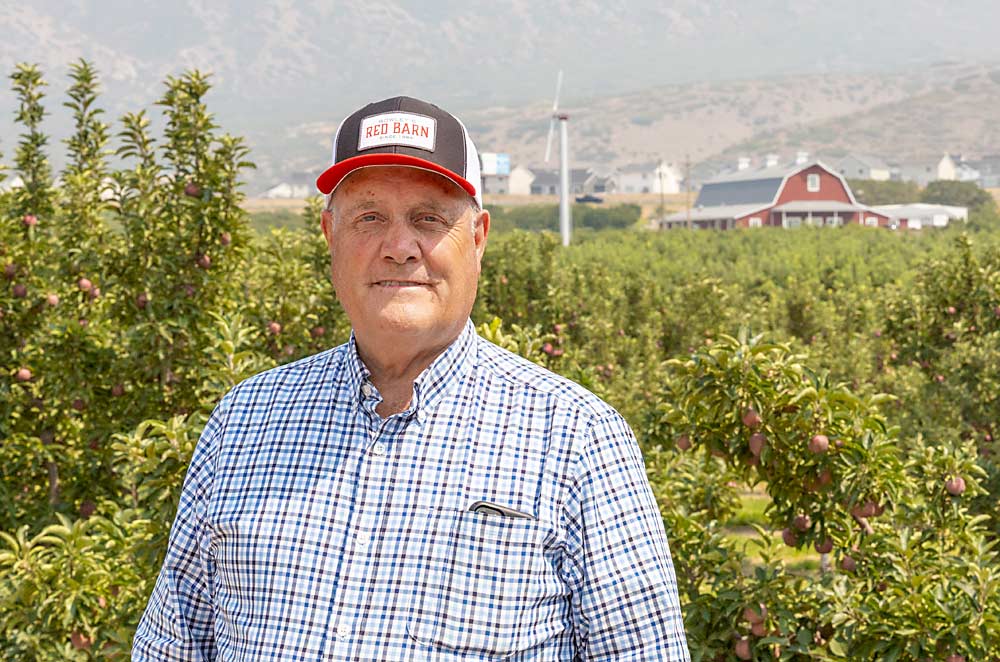
Despite the fact that traditional plantings remain the preference for Utah tart cherry growers, the industry is certainly not afraid of change. Starting in the 1960s, development pressure from a sprawling Salt Lake Valley pushed farm families off prime fruit-producing land called the Orem Bench, forcing many of them to start over, south of Provo, on suitable ground with frost drainage around Utah Lake.
Phil Rowley, a third-generation grower, grew up in one of those transplanted families, building a larger farm and farm market business in Santaquin. There, Rowley was one of the first people to experiment with drying tart cherries — unsuccessfully at first.
But his experiments positioned him to push for change in the early ’80s when tart cherry prices tanked. During the off-season, he packed up his family of 10 and drove to the University of California, Davis, to meet with a prune and apricot drying expert while his kids swam in a hotel pool.
“I came home with a workable plan for a tray drier,” Rowley recalled. “It’s about simple aerodynamics, with the right air velocity passing over the fruit, the product was phenomenal.”
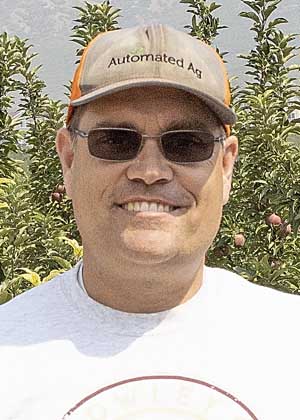
Their co-op, Payson Fruit Growers, quickly moved to adopt the new drying technology. Dried fruit represents the ideal market for Utah’s fruit, which develops higher sugars from the mountain climate’s longer growing season and cool nights, said Brent Black of Utah State University.
“He’s always been an innovator,” said Thad Rowley, Phil’s son who now manages the orchard side of a family business that includes 500 acres of tarts, along with some apples and peaches, farm markets and agritourism. “Now every cherry that’s grown in Utah, well almost, is dried.”
Over the years, the dried market Utah producers built has remained steady, compared to the ups and downs in the pie-fill market, Phil Rowley said.
“Without moving our tart cherries into the drying process, the Utah cherry industry would have gone away,” he said.
—K. Prengaman






Leave A Comment